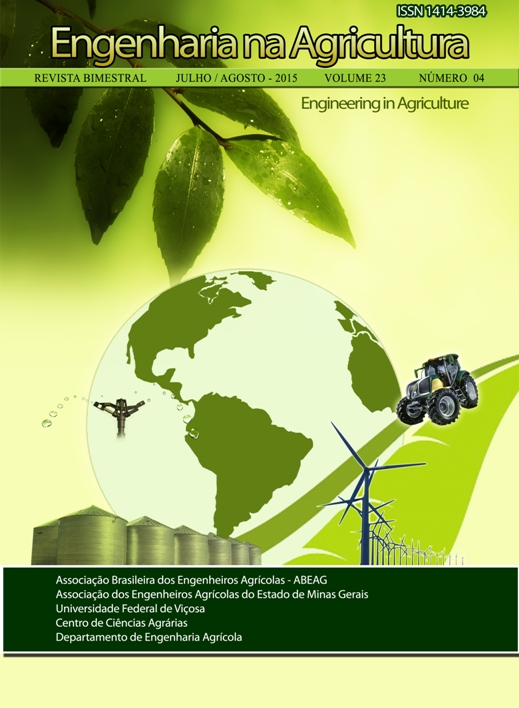USE OF PREHEATED SOYBEAN OIL IN A STATIONARY DIESEL CYCLE MOTOR - DOI: 10.13083/1414-3984/reveng.v23n4p305-314
DOI:
https://doi.org/10.13083/reveng.v23i4.531Keywords:
aquecimento do óleo, consumo combustível, gases poluentes, grupo geradorAbstract
Production, evaluation, improvement and use of renewable fuels, such as vegetable oil, make up one of the pillars of sustainability. The objective herein was to evaluate the emission of gaseous and hourly consumption when using soy vegetable oil at different vegetable oil temperatures and applied loads, in a 2 KVA stationary diesel-cycle generator. The experimental design was completely randomized in a 5x5 factorial scheme, using five soybean oil temperatures (25°C, 60°C, 90°C, 120°C and 150°C) with five loads applied to the generator (0, 500, 1000, 1500 and 2000 watts) with three replications. We determined the emission of oxygen (O2), carbon dioxide (CO2), nitrogen oxides (NOx), sulfur oxides (SO2) and carbon monoxide (CO), as well as the hourly consumption of the motor-generator. Viscosity was reduced by heating the soy vegetable oil. Heating the vegetable soybean oil to 90°C promoted the best gas emission rates. A demand load of 110 Watts presented the maximum value of NOx emissions and minimal emissions of CO, however SO2 emissions increased with increase in the demand load. The fuel consumption was increased by heating the soybean oil and increasing the demand load.Downloads
Downloads
Published
How to Cite
Issue
Section
License
Authors who publish with this journal agree to the following terms:
The author(s) authorize(s) the publication of the text in the journal;
The author(s) ensure(s) that the contribution is original and unpublished and that it is not in the process of evaluation by another journal;
The journal is not responsible for the views, ideas and concepts presented in articles, and these are the sole responsibility of the author(s);
The publishers reserve the right to make textual adjustments and adapt texts to meet with publication standards.
From submission, the author is fully conceding the paper's patrimonial rights to the publication, but retaining the owner of its moral rights (authorship and paper's identification) according to Creative Commons Attribution-Noncommercial.








 Licensed by
Licensed by 